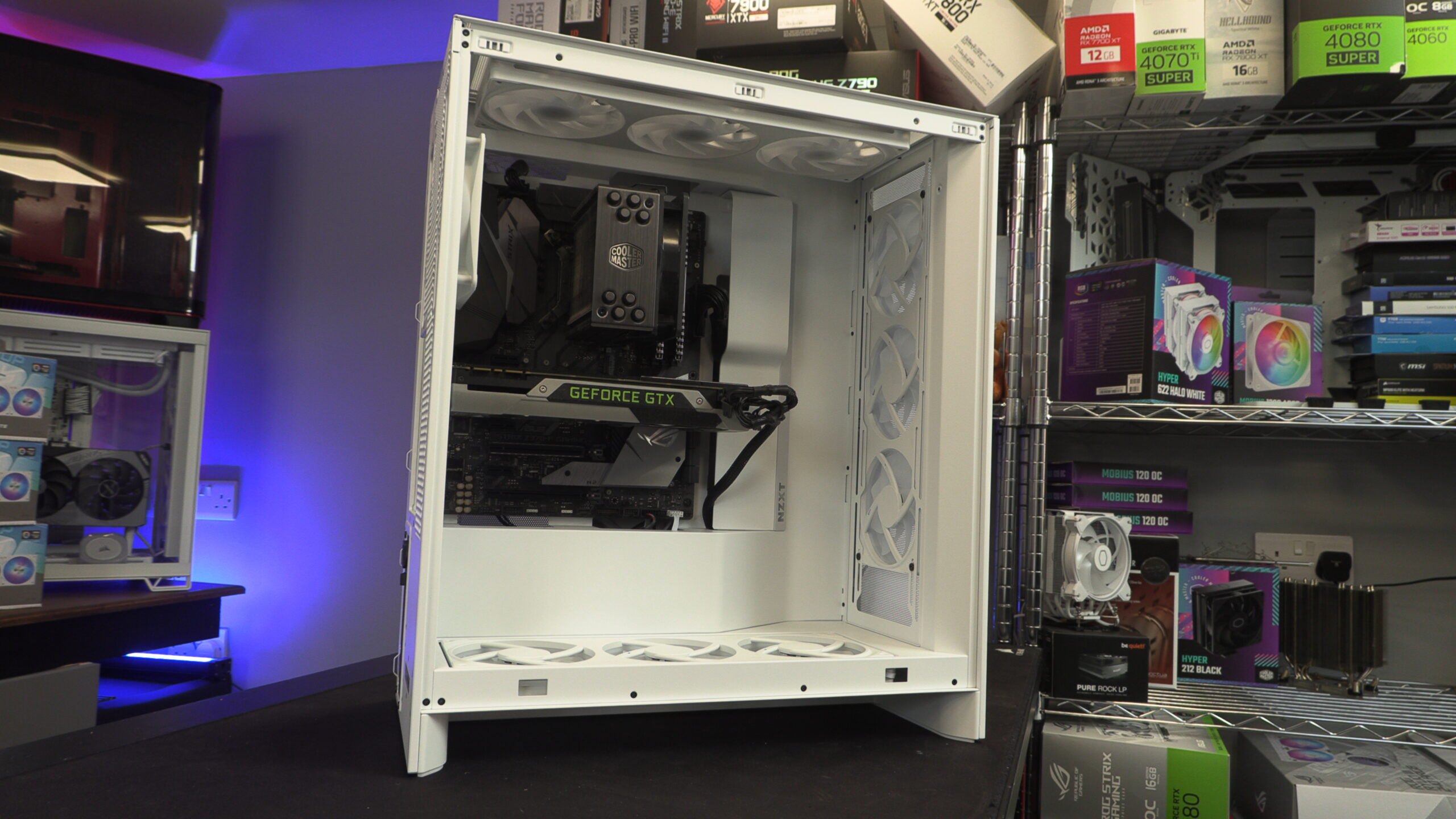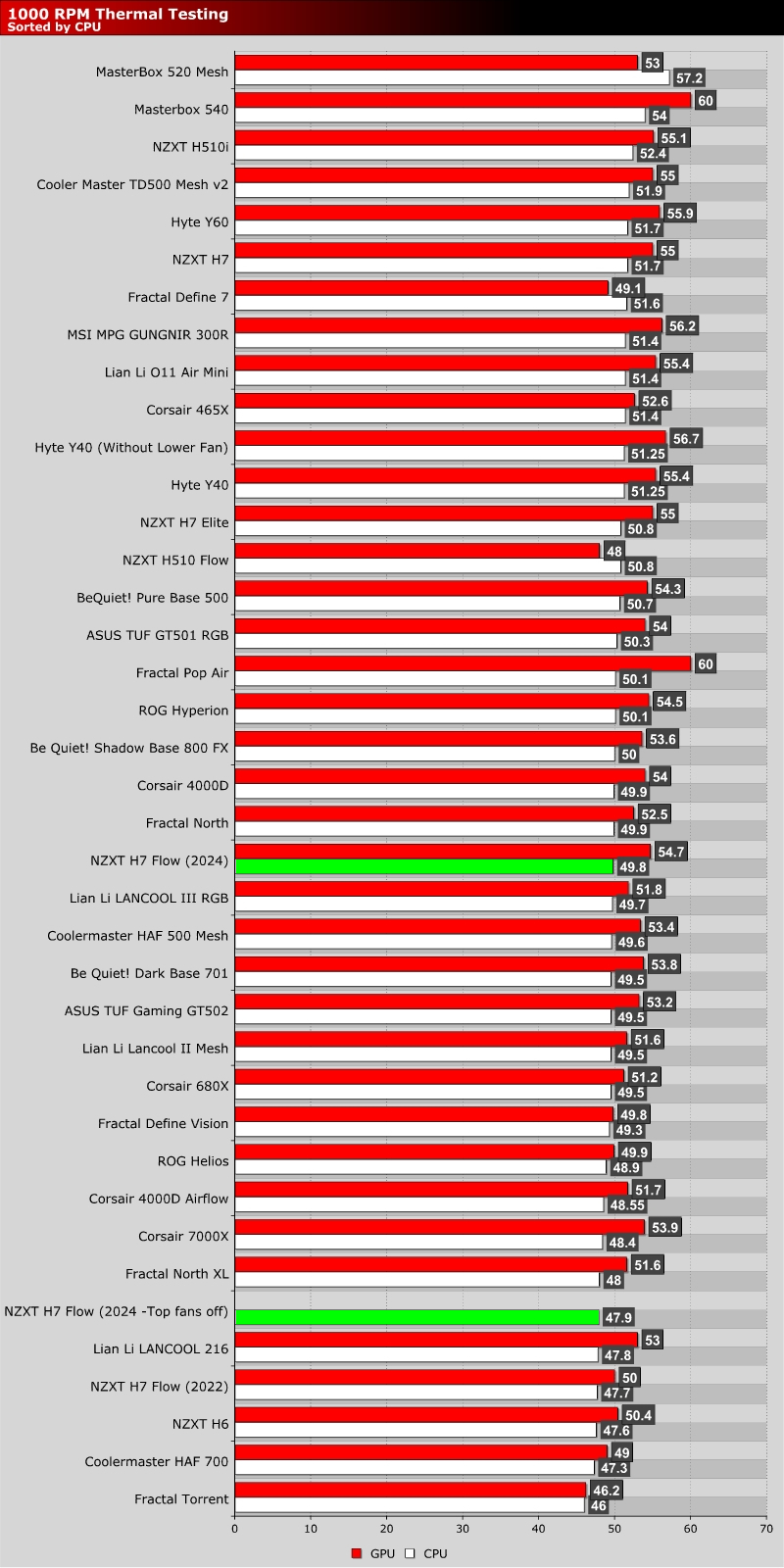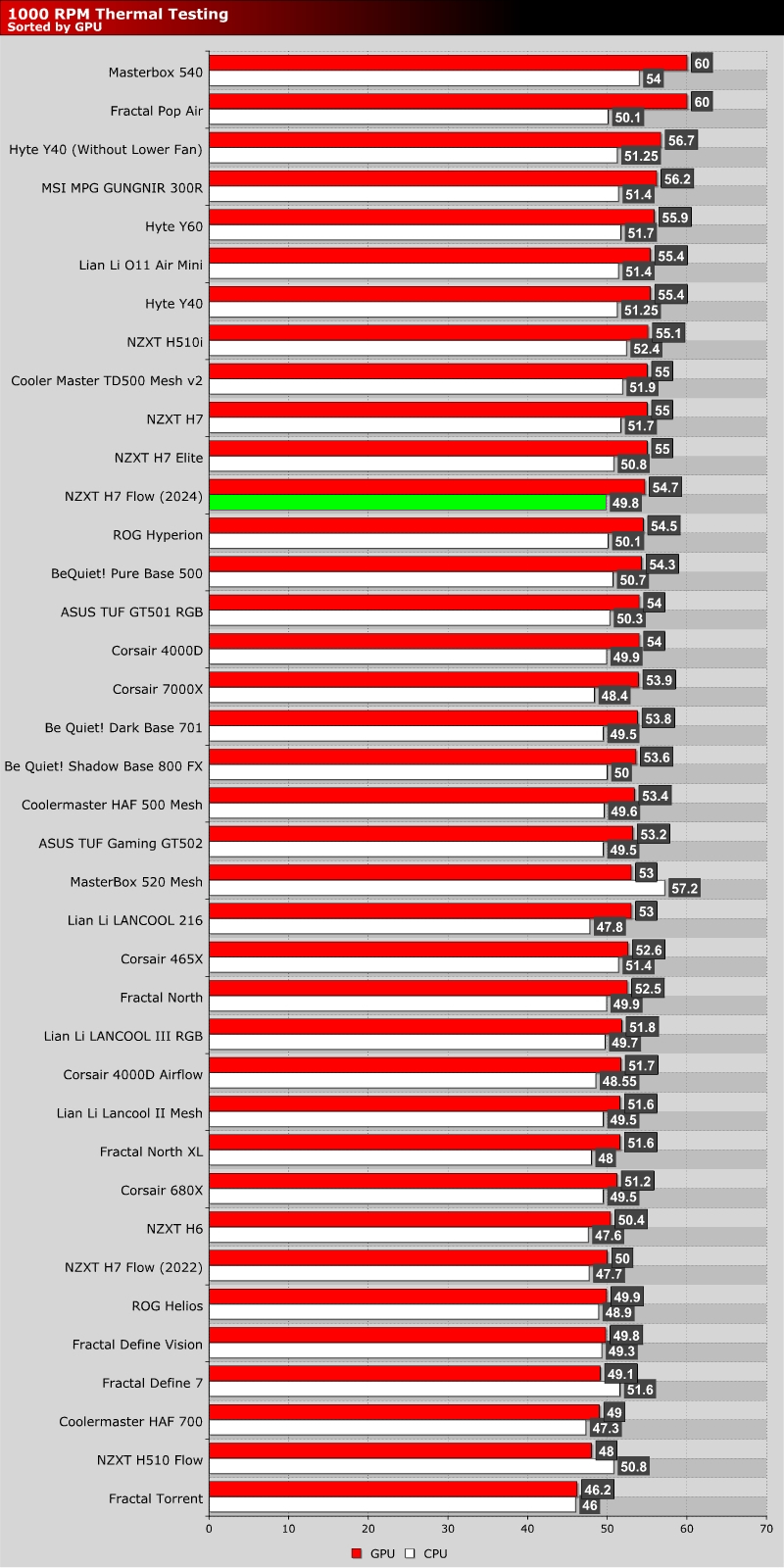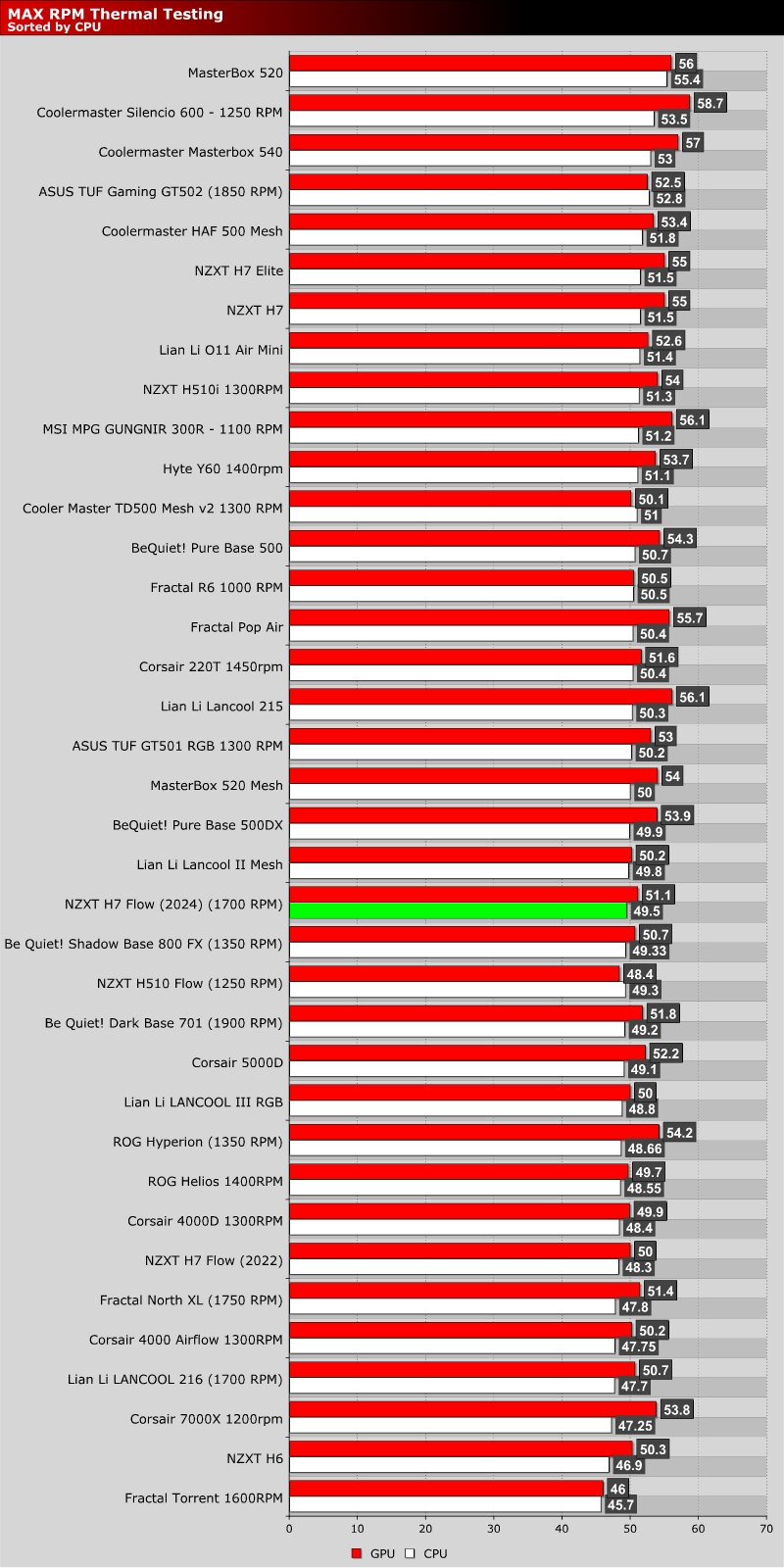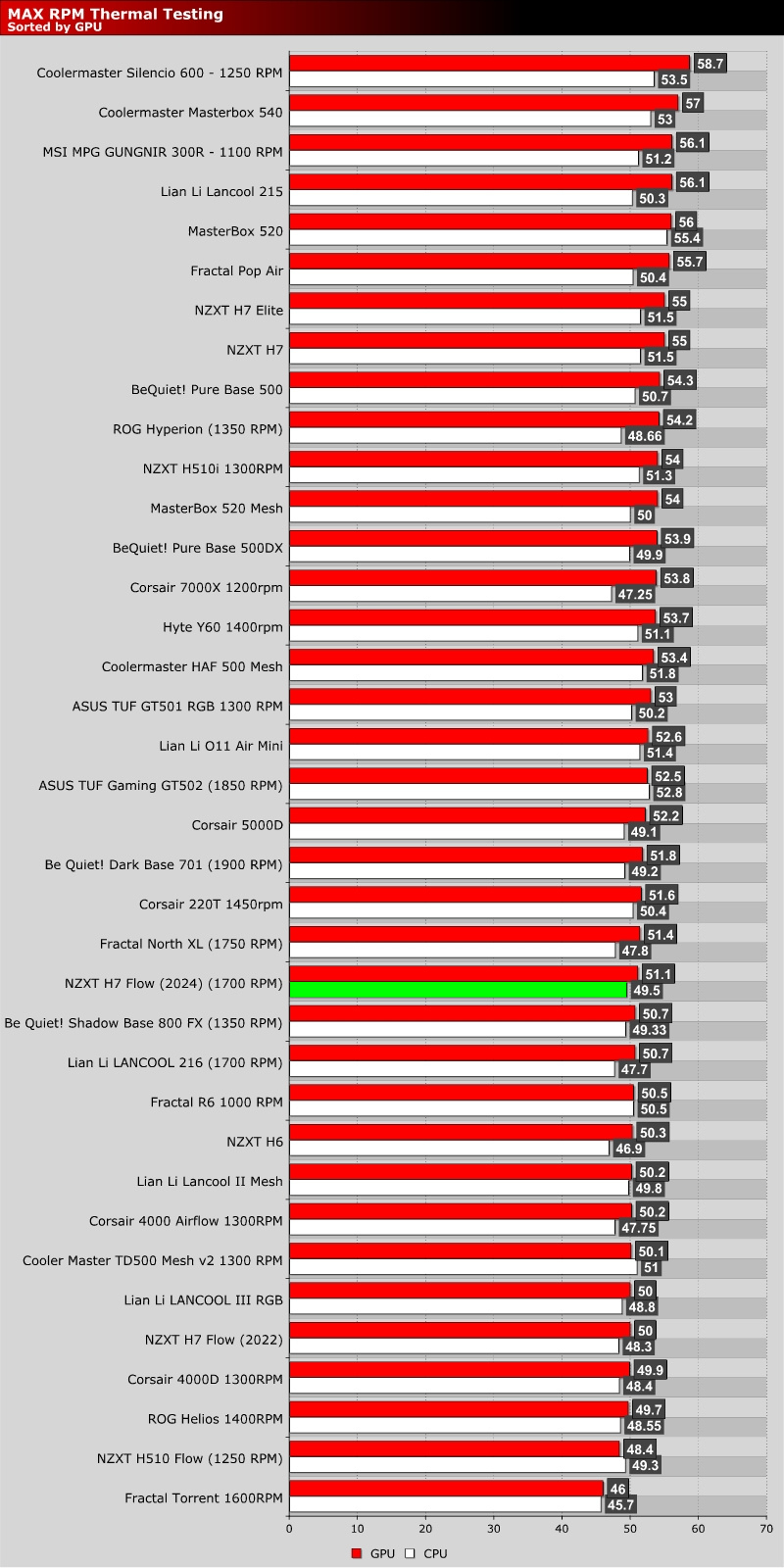NZXT H7 Flow PC Case Review
Cooling Performance
Cooling Performance
Thermal performance is an essential factor for any PC case. Your system may look great from the outside, but all of that is for nought if your PC has the internal temperature of an oven. Your PC case needs enough airflow for your components to remain cool under load and to prevent any form of thermal throttling. For our test, we used the following hardware using fixed fan speeds (so that only the case and its included fans can influence thermal performance).
be quiet! Dark Base 701
Intel i9-9700K @4.8GHz at 1.2V
ASUS ROG Strix Z370-F Gaming @ 100% Current Capacity/ LL lvl16
Cooler Master Hyper 212 Black Edition @ 9V via Fan Speed Reducer
Nvidia GTX 980 Reference @ 60% Fixed Fan Speed
Corsair LP Vengeance LP (Grey) @ 3200MHz
Corsair MP500 M.2 NVMe SSD
Corsair RM550X Power Supply
The graph below showcases Delta temperatures with a controlled ambient temperature of 20 degrees Celsius.
1000 RPM Tests
Before we talk about our tests, we will confirm that NZXT’s CAM software would not allow us to drop this case’s fan RPMs below 1300 RPM. We either had our fans turned off, or ha them running at 1300 RPM. This is a strange limitation, and we would have liked to have ran this case’s fans at slower speeds for our testing. Even so, 1300 RPM fans were practically silent. Even so, this gives this case a small advantage on our 1,000 RPM fan speed graphs.
NZXT’s new H7 Flow is a case that needs to be catered to your hardware. On our eyes, this is clearly a case that is optimised for All-in-One (AIO) Liquid Cooling solutions. Users should have a liquid cooling radiator at the top or front of this case. Ideally, a 360mm liquid cooling radiator should be at the top of this case, as that is what this case’s airflow pattern is designed for.
Our test system, with its small air cooler is not ideal for the new NZXT H7 Flow. In our testing, turning off the top bank of fans that we installed in this case caused CPU thermals to drop by around 2 degrees. That’s how much of an impact changing this case’s airflow pattern can have when using air coolers. Having more fans isn’t always better, as where you direct your airflow matters.
Max RPM Fan Speed Test
When we crank this case’s fans up to their highest speeds (1700 RPM) we see GPU thermals notably drop. That said, CPU thermals remain similar to before. If we disabled this case’s top fans, it would create a more ideal airflow pattern for our CPU air cooler, likely reducing CPU thermals by around two degrees like before. Again, this is a case that is ideally used with a all-in-one liquid cooling solution with a top mounted radiator. If you use an air cooler, you will need to make sure that this case’s airflow pattern is optimised for that.



